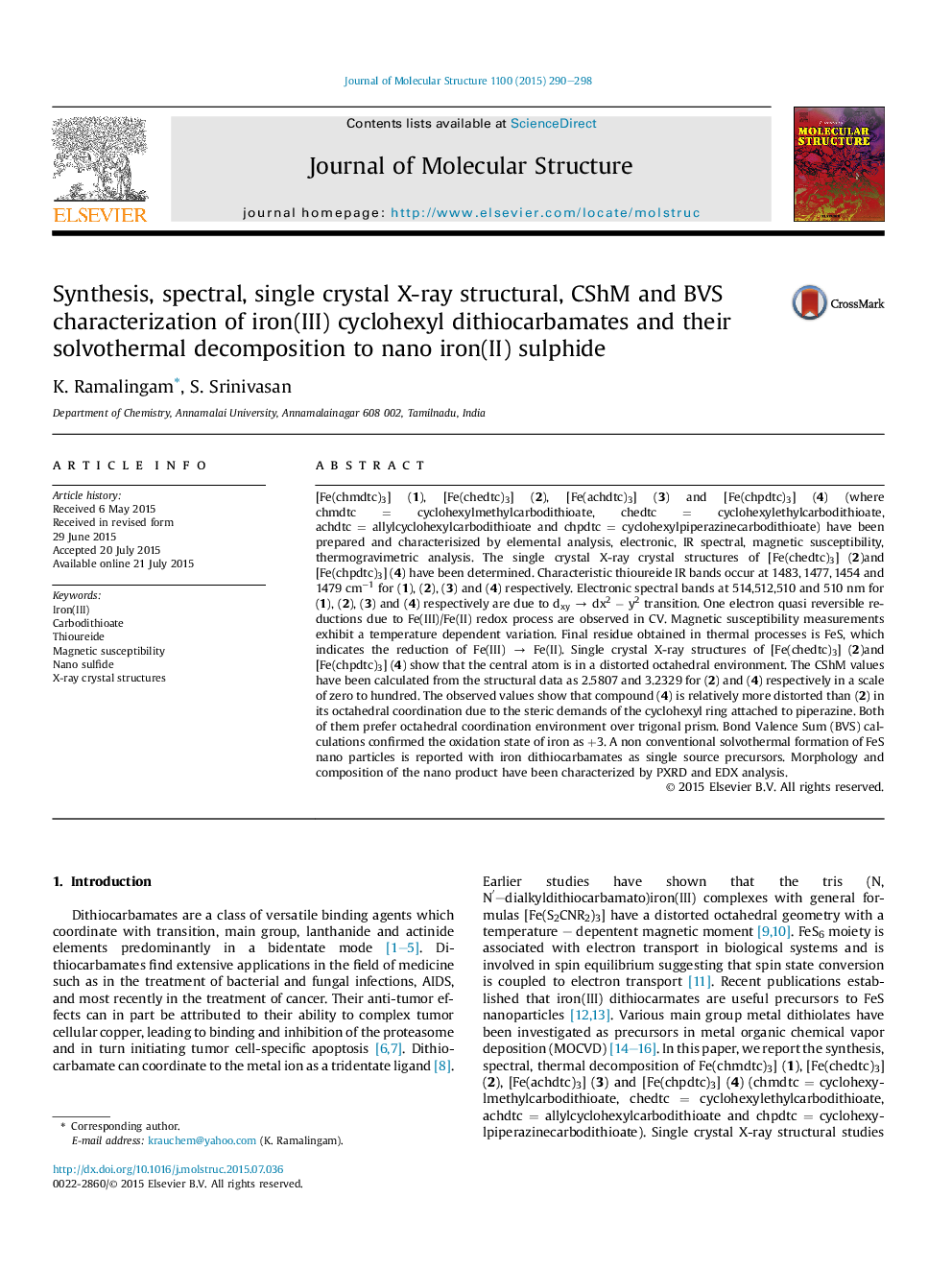| Article ID | Journal | Published Year | Pages | File Type |
|---|---|---|---|---|
| 1408020 | Journal of Molecular Structure | 2015 | 9 Pages |
•Four new Fe(III) octahedral complexes have been synthesized and fully characterized.•One electron quasi reversible Fe(III)/Fe(II) redox process is observed in CV.•For the first time, the extent of octahedral distortion has been quantified using CShM.•BVS calculations established the oxidation state of iron.•Solvothermal formation of nanoFeS from the single source precursors is reported.
[Fe(chmdtc)3] (1), [Fe(chedtc)3] (2), [Fe(achdtc)3] (3) and [Fe(chpdtc)3] (4) (where chmdtc = cyclohexylmethylcarbodithioate, chedtc = cyclohexylethylcarbodithioate, achdtc = allylcyclohexylcarbodithioate and chpdtc = cyclohexylpiperazinecarbodithioate) have been prepared and characterisized by elemental analysis, electronic, IR spectral, magnetic susceptibility, thermogravimetric analysis. The single crystal X-ray crystal structures of [Fe(chedtc)3] (2)and [Fe(chpdtc)3] (4) have been determined. Characteristic thioureide IR bands occur at 1483, 1477, 1454 and 1479 cm−1 for (1), (2), (3) and (4) respectively. Electronic spectral bands at 514,512,510 and 510 nm for (1), (2), (3) and (4) respectively are due to dxy → dx2 − y2 transition. One electron quasi reversible reductions due to Fe(III)/Fe(II) redox process are observed in CV. Magnetic susceptibility measurements exhibit a temperature dependent variation. Final residue obtained in thermal processes is FeS, which indicates the reduction of Fe(III) → Fe(II). Single crystal X-ray structures of [Fe(chedtc)3] (2)and [Fe(chpdtc)3] (4) show that the central atom is in a distorted octahedral environment. The CShM values have been calculated from the structural data as 2.5807 and 3.2329 for (2) and (4) respectively in a scale of zero to hundred. The observed values show that compound (4) is relatively more distorted than (2) in its octahedral coordination due to the steric demands of the cyclohexyl ring attached to piperazine. Both of them prefer octahedral coordination environment over trigonal prism. Bond Valence Sum (BVS) calculations confirmed the oxidation state of iron as +3. A non conventional solvothermal formation of FeS nano particles is reported with iron dithiocarbamates as single source precursors. Morphology and composition of the nano product have been characterized by PXRD and EDX analysis.
Graphical abstractSingle crystal X-ray structural determination and CShM and BVS characterization of iron(III) dithiocarbamates. Formation of nano iron(II) sufideds (18–31 nm) from the dithiocarbamate by non-conventional solvothermal decomposition.Figure optionsDownload full-size imageDownload as PowerPoint slide
